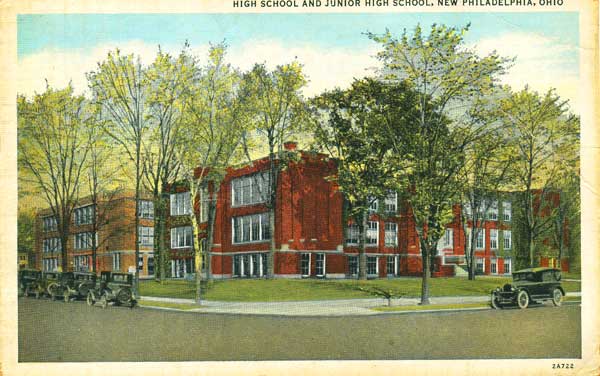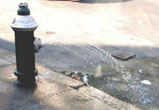

141 american vernacular
The people of New Philadelphia,
Ohio thought enough of their new school buildings to put them on a
postcard. They are indeed classic examples of a type: solidly built,
covered in big windows for lots of light, set among landscaping (note
how older trees were conserved) and ample playgrounds and fitted with
all the mod cons inside. The whole nation was learning to build schools
this way—they are the ideal of the Progressive era captured
in an image.
Under the influence of the Columbian Exposition, most Americans of the early 20th century were pleased with what seemed to be an emerging national style. Borrowed though it may have been, it seemed to fit our national aspirations and sense of identity just right. Some critics since have deplored the change in fashion, for eclipsing what might well have developed into a true national style, building on the radically original work coming out of the Midwest and California, by such men as Louis Sullivan and Frank Lloyd Wright, the Greenes, Irving Gill, and Bernard Maybeck. Wright and his colleagues even spoke of creating a new architecture, one guided by 'progressive' ideals. There was a battle between these 'rebels' and the classicists, a fight for hearts and minds and commissions. The rebels lost, and lost badly; Sullivan spent his last days drinking in a dingy hotel room, while Wright sailed off temporarily to build the Imperial Hotel in Tokyo, and the rest faded into obscurity. The battle of the styles left American architecture with a quirky sort of multiple personality disorder that continues to this day. Many of our small towns still preserve their original, pre-1920 look: brick commercial blocks rising above the trees on Main Street, surrounded by neighborhoods of houses in the same styles: a dozen flavors of eclecticism, some distinguishable only to a handful of architectural historians—but they make a pleasing unity just the same. Big cities change more dramatically, and in the 20's Americans were filling them with courthouses, libraries and museums in creamy, columned Beaux-Arts marble, while building suburban subdivisions in the Colonial and related styles-anything that looked 'homey'. Downtown, commercial developers were building Gothic skyscrapers, or increasingly opting for yet another style, the branch from Louis Sullivan's manner that grew into Art Deco. Perhaps architectural unity isn't everything. Somehow, with the help of a little landscaping and a little neon, this architectural crazy-quilt American city looked just fine. Buildings proclaimed their purpose as if they were advertising signs in themselves: Doric columns for banks, a Jeffersonian portico for the banker's house, Gothic, Romanesque, or 'Byzantine' for churches, generous mullioned windows for schools, Deco for the very sharpest corporations, a touch of the Baths of Caracalla for train stations, sententious inscriptions for civic buildings, yellow brick towers for the Sears, Roebuck Company. The battle of the styles meant little for considerations of urban design. But at the same time, a vernacular of design had fallen into place, one that was practical, sometimes beautiful and always distinctly American. The foundation of it all was the large house lot, with houses set on tree-lined, strictly residential streets (though the segregation of single from multi-family housing had not yet been legally mandated). The shops were up on the corner, on the main street, along with the streetcar stop for downtown. For most of the new residential areas, the street plan was just a continuation of the grid, though as some developers sought Downingesque effects, subdivisions started to sprout curves. The design elements of the City Beautiful had been assimilated in most growing towns: a park and parkway system, a monumental downtown with as many tall buildings as the market could support and perhaps some effort at a civic center, and perhaps a cultural center. Cities concentrated on the details too, burying cables, planting trees, purchasing elegant new light poles, benches and other street furniture. Our cities probably never looked better than they did in the 20's and 30's, and they were perhaps never more pleasant and convenient for the people who lived in them. |
|

|